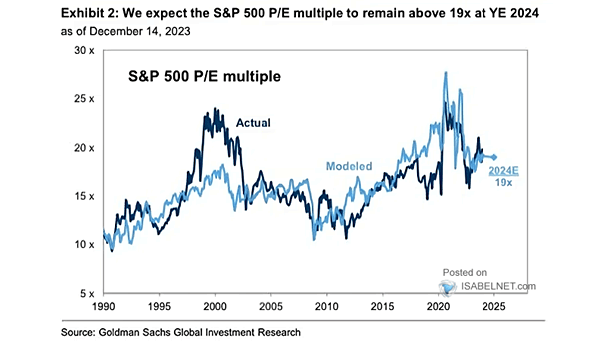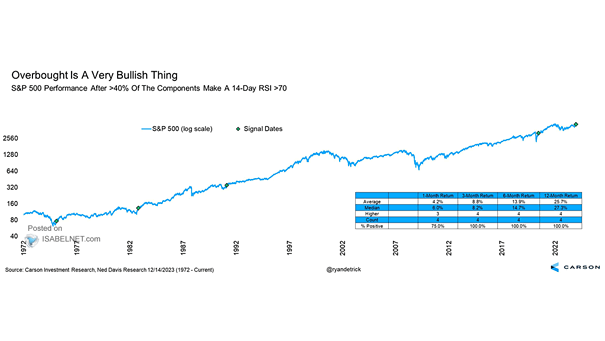Valuation – S&P 500 Price/Earnings Ratio
Valuation – S&P 500 Price/Earnings Ratio The S&P 500 P/E multiple is expected to remain above the average level observed since 1990, indicating investors’ willingness to pay more for earnings, possibly due to optimism about future growth. Image: Goldman Sachs Global Investment Research


